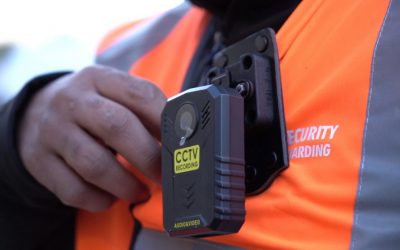
Current UK Terror Threat Level
Few countries in the world can say that they have never been the victim of a terror attack – the UK is not one of them. In fact, ever since 2006, the terror threat level has never been below substantial. In this article, we will be talking all about the different terrorist threat levels in the UK.
What Are The UK Terror Threat Levels?
In the UK, the government has threat levels for terrosim. These threat levels can tell you what terrorism in the UK is like and indicate how likely it is for terrorist attacks to happen. These different levels are:
- Terror Threat Level 0 (Low)
- Terror Threat Level 1 (Moderate)
- Threat Level 2 (Substantial)
- Threat Level 3 (Severe)
- Threat Level (Critical)
Below, we have talked about in more detail which levels the UK has been in during the past.
Terror Threat Level 0 (Low)
Unfortunately, the UK has never been able to set its terror level ever since the terror threat level began to be recorded. This level simply means that an attack is unlikely.
Terror Threat Level 1 (Moderate)
Again, the UK has never been able to mark its threat level this low. As expected, this means that the chance of a terror attack soon is moderate and whilst a terror attack may happen, it is unlikely.
Threat Level 2 (Substantial)
This is currently the lowest level of terror threat the UK has had. This threat level has not been used since October 2012, however.

Threat Level 3 (Severe)
Severe is the currently terror threat level in the UK at the time of writing since the 1st of March 2018. It means that a terror threat is ‘highly likely’. This has unchanged since the Manchester Arena bombing in September 2017 and is where government officials state the level shall reside for the ‘foreseeable future’.
Threat Level 4 (Critical)
A critical terror threat has not been seen since September 2017, which means that an attack is expected imminently. This is sometimes triggered as a response to a terror attack temporarily as well.
These threat levels also come with different response levels that determine how security in the UK is handled. These security levels are normal, heightened, and exceptional.
Normal Security Levels:
- Low Threat
- Moderate Threat
Heightened Security Levels:
- Substantial Threat
- Severe Threat
Exceptional Security Levels:
- Critical Threat
The exceptional security level can also make use of the army when appropriate.

Joint Terrorism Analysis Centre
The terror threat level is set by the Joint Terrorism Analysis Centre, or JTAC for short. Their job involves a huge amount of data analysis, aiming to predict and understand how, where and when a terrorist attack may take place.
How Can Security Guards Stay Safe From Terrorism?
When working as a security guard, it is very important to know the terrorism threat level and how it can affect your job, because at different threat levels you’ll be expected to perform different roles and functions to make sure all runs smoothly. In the event of a terror attack, your manned security guard will be the first line of defense. The UK government recommends that security guards follow these rules when on the job:
- Wear high-visibility clothing and implement an unpredictable security patrol strategy.
- Report any suspicious activity in a timely manner.
- Create communication links with surrounding premises to make passing information relating to suspicious activity/behaviour easily.
- Close non-essential access and exit points.
- Focus CCTV on all communal areas and access points.
- Keep first aid points fully stocked and make all employees aware of their location.
As a security company, it is important that your staff are trained to understand what to do in the event of a terror attack, and not keeping your staff up-to-date could lead to disastrous outcomes. Luckily, with Region Security Guarding – we’ll do the security work for you.
To stay updated with all the latest industry news check out our news page where you can find articles about public safety and about security accreditations.
Related Articles
What Is Public Safety?
There are many different public safety definitions, but the main idea that runs through each one of them is that citizens are protected from harm.
Terrorism In The UK – Are We Safe From A Terrorist Attack?
We can see there has been an overall decrease of incidents of terrorism over time, with some spikes occurring in the data. This is due to an increased awareness of the threat as well as governments across the world investing more resources into counter terrorism measures and security.
It is still something that effects our day to day lives and is always a risk. So, what are we doing to stay as safe as possible?
Do People Feel Safe In The Presence Of Uniformed Officers?
Recently we ran a survey asking around 500 participants if they felt safe in the presence of uniformed officers (police officers, security guards etc.) and the results we got back were quite surprising.
Why Should You Change Security Companies?
Having security in place is necessary for any business or organisation that has property they want to protect. For some business’s however, knowing whether or not you are getting the right deal can be more complex due to the fact that…
Security Accreditations Explained
When dealing with security companies, many tend to advertise their range of security accreditations. But what do they mean? In this article we’ll go over some of the most common security accreditations and what they mean for your business.









